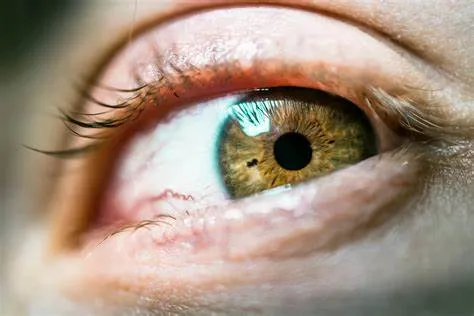The US Supreme Court recently in the case of Dobbs v. Jackson women’s health organization, has shown a lack of Constitutional courage in disregarding the legal precedent as well as the elimination of a constitutional regime that weighed both federal and pregnant persons’ interest by overruling its historical judgment of 1973 in the case of Roe Vs Wade, thus having serious implications for sexual and reproductive health rights of the Individual. This article aims to critically discuss the upturning of the Roe Vs Wade Judgment which not only has grave consequences but has also faced severe criticism not only within the United States but throughout the world. The article also aims for a reader to draw its attention towards comparing the situation of United States post its recent judgment with the abortion laws in India while briefly discussing the Medical Termination of Pregnancy Act, 1971 amended in year 2021. It further analyses how abortion laws in India encompasses the wide and deep-rooted ideology while maintaining a balance between the fundamental right of a women and the Right to life of a foetus. The article also aims to describe that the Indian abortion laws are more progressive, while the situation in US is regressive and conservative.
Abortion rights in the US
no more a part of right to privacy The US Supreme Court in its landmark ruling in Roe v. Wade had recognized that the right to abortion is a fundamental liberty duly protected by the Fourteenth Amendment of its Constitution. The right to privacy was also recognised in the USA in 1891, and in 1973, in Roe v. Wade, the right to abortion was read into the woman’s right to privacy and also been regarded as a constitutional right. Since the said judgement, the Court has repeatedly reaffirmed the Constitution’s protection for this essential liberty, which guarantees each individual, the right to make personal decisions about family and childbearing. Over the decades, the US Court first held that the Constitution encompasses protection for the right to abortion, including in its earlier decision of 2016 in the case of Whole Woman’s Health v. Hellerstedt, therein it has also recognized that without access to abortion, the right to privacy is meaningless. That recently US supreme Court vide its judgement dated 24th June, 2022 in the case of Dobbs v. Jackson women’s health organization has overturned the Judgement of Roe v. Wade, which has lead to depriving the fundamental right which includes right to privacy of the Individual and thus leading to its violation which is guaranteed by the fourteenth amendment of the US constitution. Earlier as per the judgement of Roe V. Wade the individual had the fundamental right to terminate the pregnancy, which now with the subsequent judgement has been taken away and the choice of the individual to terminate the pregnancy is no more available, hence declaring abortion as illegal.
Implications and consequences of the Recent Judgement
Roe v. Wade, the landmark decision that established a constitutional right to abortion for both pregnant individuals and women, has been overturned by the US Supreme Court in the case of Dobbs v. Jackson. By doing so, the Court disregarded medical data, as well as issues pertaining to public health and human rights. The provision of abortion services is now the responsibility of each individual state, which has resulted in a hodgepodge of abortion laws throughout the country with some states outrightly prohibit abortion in all circumstances. By imposing such decision making to its states, the United States of America will no longer be cohesive, but would instead inhabit a balkanized world fraught with interstate conflict. Thereby, twenty-six states within US will ban abortion immediately and also there will be a return of criminalization of abortion in most of the states. The states will prosecute options that are cherished by most Americans. In addition, the ramifications of Dobbs extend far beyond the realm of abortion. The freedom that was recognised in the cases, whether it was called “privacy” as in the Roe v. Wade decision or “liberty interests” as in the Casey decision, is the very foundation of the clinician–patient relationship. This freedom is the ability to explore medical options and the patient’s values in order to make decisions that profoundly affect the patient’s life and well-being. The potential for wide-ranging consequences comes from the fact that the Court not only reversed Roe and Casey, but also assailed their core rationale and relevance as long-standing decisions. Dobbs also raises the spectre of state regulation of other health care decisions, such as those pertaining to contraception, end-of-life care, care for LGBTQ patients, in vitro fertilisation, and other fertility treatments. These are all examples of decisions that the States could potentially regulate. Some jurisdictions have already begun to criminalise commonly used birth control methods as “abortifacients,” including intrauterine devices (IUDs) and emergency contraception. State laws that declare that life starts at fertilisation may possibly provide rights to thousands of embryos that have been frozen and will create responsibilities that are difficult to bear on both fertility institutions and the people who seek their services.
Global impact
That now due to the recent decision, the Constitution no more confers a right to abortion; Roe and Casey are overruled; and the authority to regulate abortion is returned to the people and their elected representatives. Thus this will raise an alarming consequence since it will create a controversy and difference of opinions amongst the States. That the impact of this decision would not remain only within the United States but could even be beyond its territories and affect the abortion rights globally. Several developing countries can use the same as a precedent and curb the abortion rights of the individuals and may raise a question of debate whether the unborn child’s right to life is to be weighted more in comparison to the fundamental right of the women, which can create a havoc in countries where there is already an established law for right to abortion. Further, there are secondary effects and excess to safe abortion is further restricted, the result will not be fewer abortions globally, but just more unsafe and unregulated Abortions, leading to serious mental and physical repercussions. This could be deadly as there are chances that all these unsafe abortions could be a leading cause of maternal death, which could be more common in developing countries. If such precedent is followed by the developing countries then it will amount to forcing girls/women to keep pregnancy will also have negative impact on poverty reduction and economic growth.
Comparison of the US abortion laws with Indian abortion laws
That now the US Supreme Court has held the Right of abortion after fifteen weeks as illegal and have restricted the same, further leaving the discretion to the individual States in respect of framing laws relating to Abortion. The ruling reversing the 1973 roe v. wade decision lays the stage for almost half of the fifty states to prohibit or severely limit women’s access to abortions.The first limitation will go into effect in 13 states with so-called “trigger legislation” that will be established after the verdict is reversed.Some trigger laws prohibit abortions nearly entirely, while others prohibit abortions after six or fifteen weeks. Under the Indian Penal Code, 1860, abortion remains a criminal offence under Section 312. However, the Medical Termination of Pregnancy Act, 1971 (MTP) and its amendment pf 2021 simply provides an exception to the criminalization. The MTP Act, 1971 allowed abortion until 20 weeks of pregnancy. Through an amendment in 2021, the ceiling for abortions was raised to 24 weeks, but only for special categories of pregnant women such as rape or incest survivors, that too, with the approval of two registered doctors. In the case of fetal disability, there is no limit to the timeline for abortion, but that is allowed by a medical board of specialist doctors set up by the governments of states and union territories.
Discourse raised:Unborn child’s right to life Vs fundamental rights of the women
The main contention that has divided the people, the country and the courts for years is: What takes precedence, a woman’s right to have an abortion and have the last word over her reproductive autonomy or an unborn child’s right to life. According to legal precedent, courts have repeatedly attempted to strike a balance between the two parties’ rights, and the resulting legal jurisprudence is straightforward: before a woman reaches viability, the state has virtually no influence on her decision to abort a child; however, after viability, regulations are necessary, but prohibitions are not. In the medical community, abortion is as divisive as in the rest of the world. Analysis of the legal frameworks and political debates in the US and India on abortion has shown a preference for foetal viability and finding a balance between mother and child’s rights in America. On the other hand, women’s liberty is highly valued in India.The right of liberty in the United States and the constitutional protection of a woman to terminate her pregnancy is derived from the due process clause of the Fourteenth Amendment. In Dobbs v. Jackson Women’s Health Organization, the Supreme Court heard the basic argument for the right to life: the viability test must be rejected. A foetus is now recognised by the Court as a living thing, regardless of whether or not it is viable outside the womb, even though it was previously declared by the Court to be at most the potentiality of life. If the Court is obligated to preserve a woman’s “life inside,” then they may do so by law. They can’t achieve this, though, by making it illegal for a woman to end her pregnancy before it reaches viability. To put it another way, the Supreme Court has ruled that every choice taken by a woman must be fully aware of all implications, including those she may face physically or emotionally.
Dilemma and contention raised : When does life begin
Advocates for the unborn child’s right to life contend that the Fourteenth Amendment to the United States Constitution employs the term “person” and applies to an unborn person, despite the fact that this argument was rejected in Roe v. Wade. Intriguingly, although rejecting the argument in Roe v. Wade and in subsequent decisions, the Supreme Court has not looked into the question – When precisely does life begin? The Supreme Court of US stated that we need not resolve the difficult question of when does life begins since those trained in the respective disciplines of medicine, philosophy, and theology are unable to arrive at any consensus, thereby the judiciary, at this point is not in a position to speculate the answer. Thus the following statement “When does life begin” remain unanswered and therefore the unborn child’s right to life remain in contention since we cannot determine when does the life of the foetus begins.
CONCLUSION
Thus the US Supreme Court emphasizing on the rights of the unborn child and its disregard for fundamental right of abortion, mental health hazards and other physical integrity, making abortion regulations in the United States stringent, regressive and conservative. On the contrary, in India, the 1971 MTP Act was itself forward-thinking when it was passed and thereafter the by implementation of the Amendment act 2021, the abortion barrier was raised to cover unmarried women and medical breakthroughs in the area were taken into consideration. Thus as a consequence it is anticipated that the current status of abortion laws in US is on a downward spiral while, India, on the other hand, has always taken a more progressive posture. Consider that even in this day and age; when governments are working hard to provide equal rights for women, implementing strict abortion regulations undermines women’s rights thus disregarding the status of the country. Abortion is permitted in most nations if the mother’s health or life is in jeopardy if the pregnancy continues. Nonetheless, in delicate and emotionally distressing situations like rape and incest, abortion should be permitted as fundamental right. All governments should consider the rights of women, the rights and health of unborn children, and the physical and emotional health of pregnant women while crafting abortion policy. The overruling of Roe Vs wade is the indispensable first step toward reestablishing legal protection for unborn children, but it is only the first step. Much work will remain to be donein state and federal courts, in state legislatures and in the hearts and minds of the American people.”While India stands amongst nations with a highly progressive law which allows legal abortions on a broad range of therapeutic, humanitarian and social grounds. Authored by:- Mr Ramit Mehta, Advocate, Rajasthan High Court and Managing Partner of Mehta Chambers Co-Authored by:- Mr Rajat Rathi, Student,Institute of Law,






















